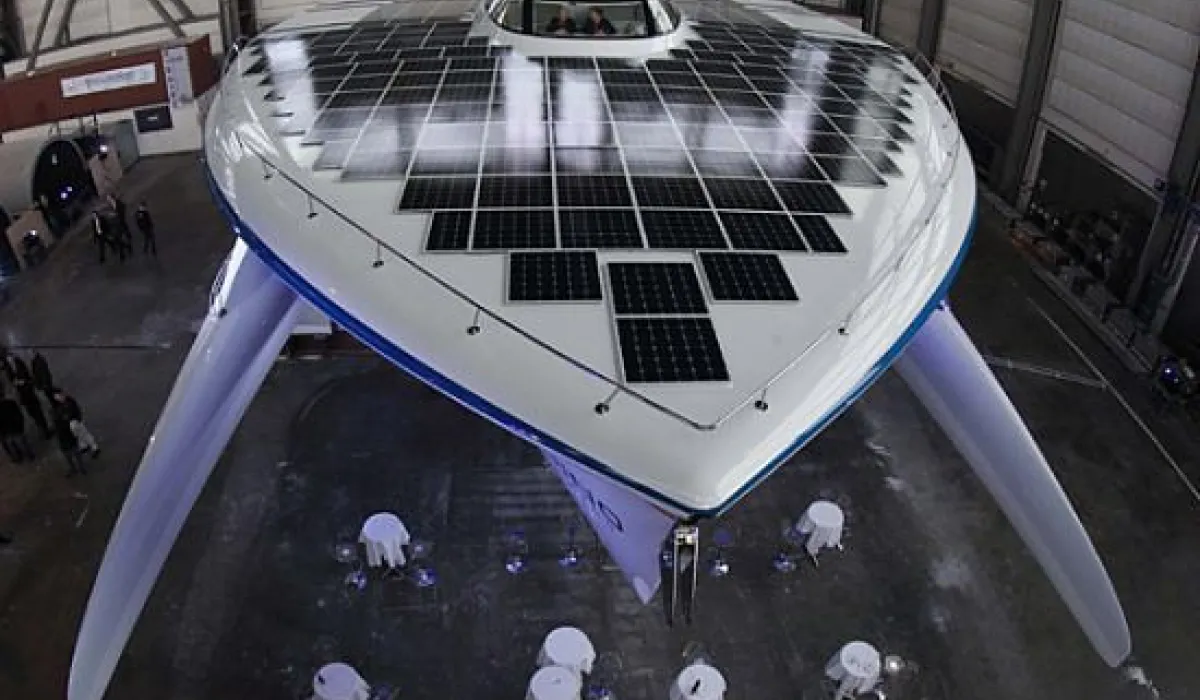Largest Solar Powered Boat

Unveiled at a shipyard in Kiel, Germany, the vessel is a catamaran made entirely out of the same kind of carbon-fiber composites that make modern airplane wings strong yet light. On its 25,000 mile journey around the world, the 100 foot long and 50 foot wide boat, known as PlanetSolar, will have to withstand high winds, stormy seas and days without sunshine. On board, the world's largest lithium-ion battery, a 13-tonne monster capable of storing 1,300 kilowatt-hours of energy when fully charged, will allow the boat to slice through the water at an average speed of 13 kilometers per hour for three days straight in complete darkness before its charge is completely exhausted.
The ship can fully recharge its battery in the span of a little more than two days of full sunshine if it's not drawing power at the same time, such as when it's docked in a marina, according to Domjan, a paramedic turned engineer who is the visionary behind PlanetSolar as well as its co-captain. The ship is designed, however, to operate at sea indefinitely, and under normal conditions its 38,000 solar cells average enough power production to muster the 20 kilowatts of power needed to keep the boat cruising along at its average speed. The maximum electrical output of all the cells together on a sunny day is about 100 kilowatts.
On a solar boat, where the amount of energy available is much lower than on a traditional fossil-fuel–powered vessel, efficiency is of the utmost importance, says Jeff Morehouse, head of the Solar Splash intercollegiate solar boat competition and professor of mechanical engineering at University of South Carolina in Columbia. In addition to its double-hulled design, which means the boat has much less drag when it moves through the water compared with a single-hulled boat of similar size, PlanetSolar has a number of innovations to make it as efficient as possible.
One of these innovations is PlanetSolar's propeller design—both propellers sit at the water line, half in the water and half out. This kind of prop, known as a "surface-piercing" propeller, can be much more efficient than traditional propellers, because it prevents the blades of the propeller from interfering with one another as they push through the water, Morehouse says. The blades of a surface-piercing propeller also experience almost no drag during the time spent out of the water.

